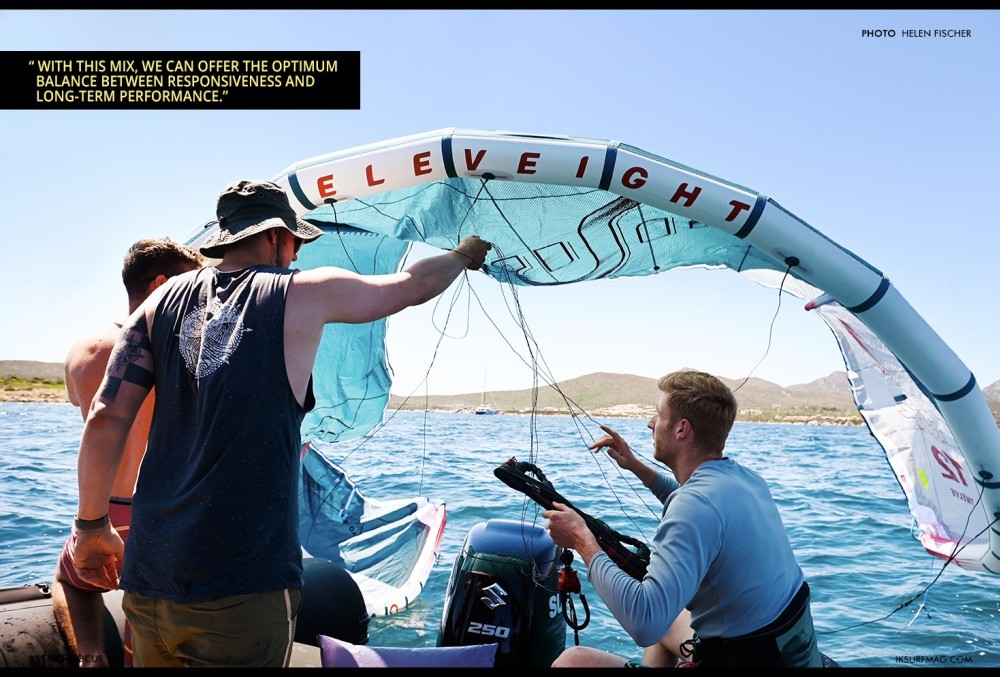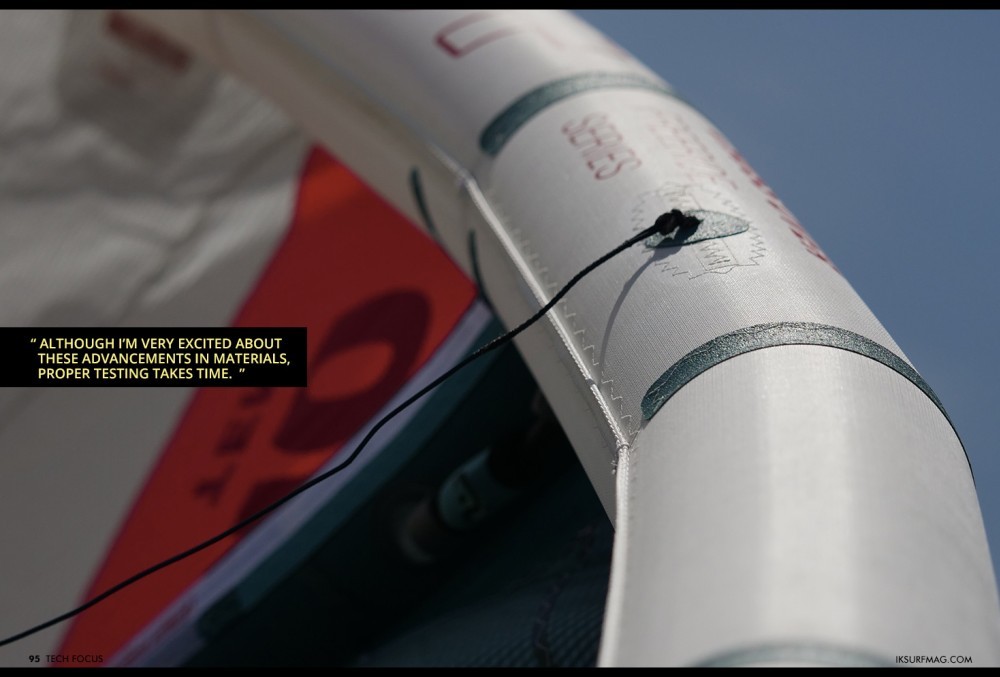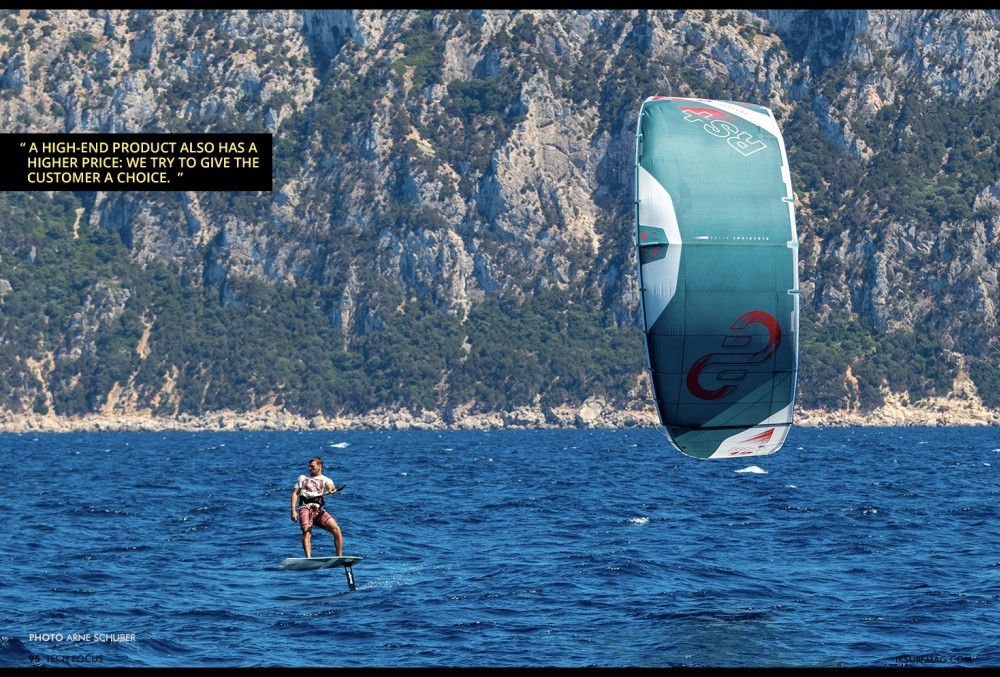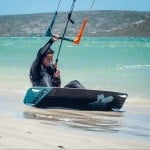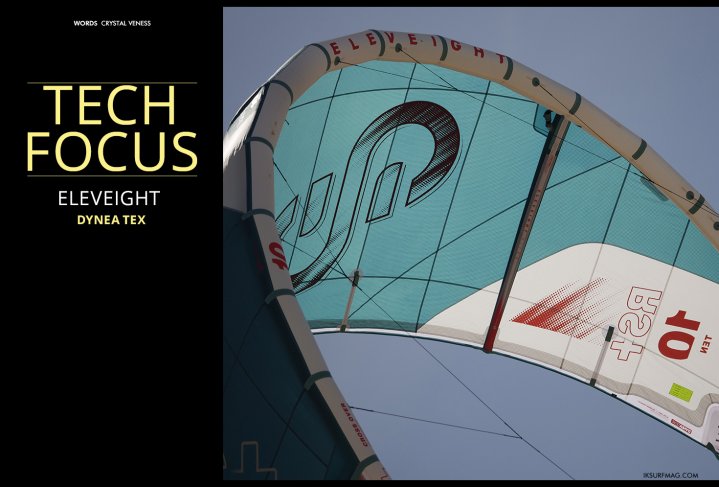
Tech Focus: Eleveight DyneaTex
Issue 95 / Wed 5th Oct, 2022
The recent release of the new Eleveight RS+ marked the announcement of a new material, Dynea Tex. We spoke to Robert Bratz to learn more about Eleveight's approach to materials innovation!
Robert, tell us about the Dynea Tex material used on the new Eleveight RS+! Is this material exclusive to Eleveight? What are the key characteristics of this material?
Yes, Dynea Tex is an exclusive development for Eleveight, and we work in close conjunction with our supplier to reach the best performance outcome.
Dynea Tex is a special woven material that uses Dyneema fibres as a core component. As a result, the material is lighter and stronger than normal inflatable materials, but more importantly, it has increased flying performance. For example, our RS+ build with Dynea Tex is lighter in weight, more dynamic and extremely responsive.
What was the process of discovering and testing this material? How does one come up with the idea of using the same fibres used in Dyneema lines in a woven fabric?
At Eleveight, we have a development process that's very driven by performance and technology. We are constantly testing new materials, and in the last few years, one of our main focuses has been the development of a new material for the inflatable structure. Our driving force behind the development is kite designer and founder Peter Stiewe. He has extensive knowledge of different materials and has used similar materials already in past developments.
Which areas of the kite are using Dynea Tex?
Throughout the development process, we tried different specifications, such as the whole inflatable structure with Dynea Tex or only some parts on the leading edge. In the end, we used a mix of materials with Dynea Tex on the leading edge and our XT Light material for the struts. With this mix, we can offer the optimum balance between responsiveness and long-term performance.
What are the notable performance improvements over standard Dacron?
I think the hot topic is weight reduction. New materials are lighter and will decrease the overall weight of kites. This parameter greatly impacts low wind conditions and is easily noticeable compared to standard Dacron. But we also talk too much about weight; more important is the performance impact on the overall stability. For Example, the RS+ with Dynea Tex is stiffer and has less deformation and faster rebound, and as a result, it's more responsive. For the rider, the kite feels more dynamic; it reacts quicker and can handle higher winds better.
What does 50% less elongation mean and 80% better recovery of material mean?
All woven materials have a certain level of stretch which will increase over time. Elongation, in other words, simply means the stretch of the material. To decrease this elongation will have a significant impact on performance and long-term durability.
Better recovery means better form stability under load. The end user will feel the performance increase, particularly in higher winds. The kite can cover gusts much better, is more reactive and offers more control in these conditions. With a higher structural stiffness of the inflatable structure, we have less deformation of the profile and more efficiency in power development.
Being 32 times stronger and still 30% lighter than more traditional materials sounds like a major improvement. Why aren't all kites using these newly engineered materials?
First of all, traditional materials will remain in the industry. The vast majority of kite models still offer the best performance-to-value ratio for the customer. New materials have a great impact on the high-performance sector but also have an increase in price. Not every customer wants, or more importantly, needs, a state-of-the-art product.
What are the downsides of a specially engineered fabric like this? How much does it increase the cost of the kite if comparing the RS+ to the RS?
New materials like our Dynea Tex are much more sophisticated in the production process and, therefore, more expensive. We at Eleveight try to keep this price level as reasonable as possible. But a high-end product also has a higher price: we try to give the customer a choice.
With our Plus line, you can purchase state-of-the-art gear, but you also have the option to choose the normal range, which already performs fantastically. The price difference between the RS and RS+ is between 400 and 450 euros. For example, a 12m RS retails for 1499 euros. The RS+ model with Dynea Tex is priced at 1929 euros.
Which kiters should look at the RS+ over the RS? Where does this kite shine over the base RS?
The RS+ is a bit like a top-performance racing car; it is light, direct and powerful. Combining the core DNA of the RS with our innovative Dynea Tex material, the RS+ offers a new premium, high-performance freeride experience.
Videos
By Crystal Veness
Editor at IKSURFMAG, Crystal Veness hails from Canada but is based in South Africa. When she isn't busy kitesurfing or reporting on the latest industry news for the mag, she is kicking back somewhere at a windy kite beach or working on creative media projects.




